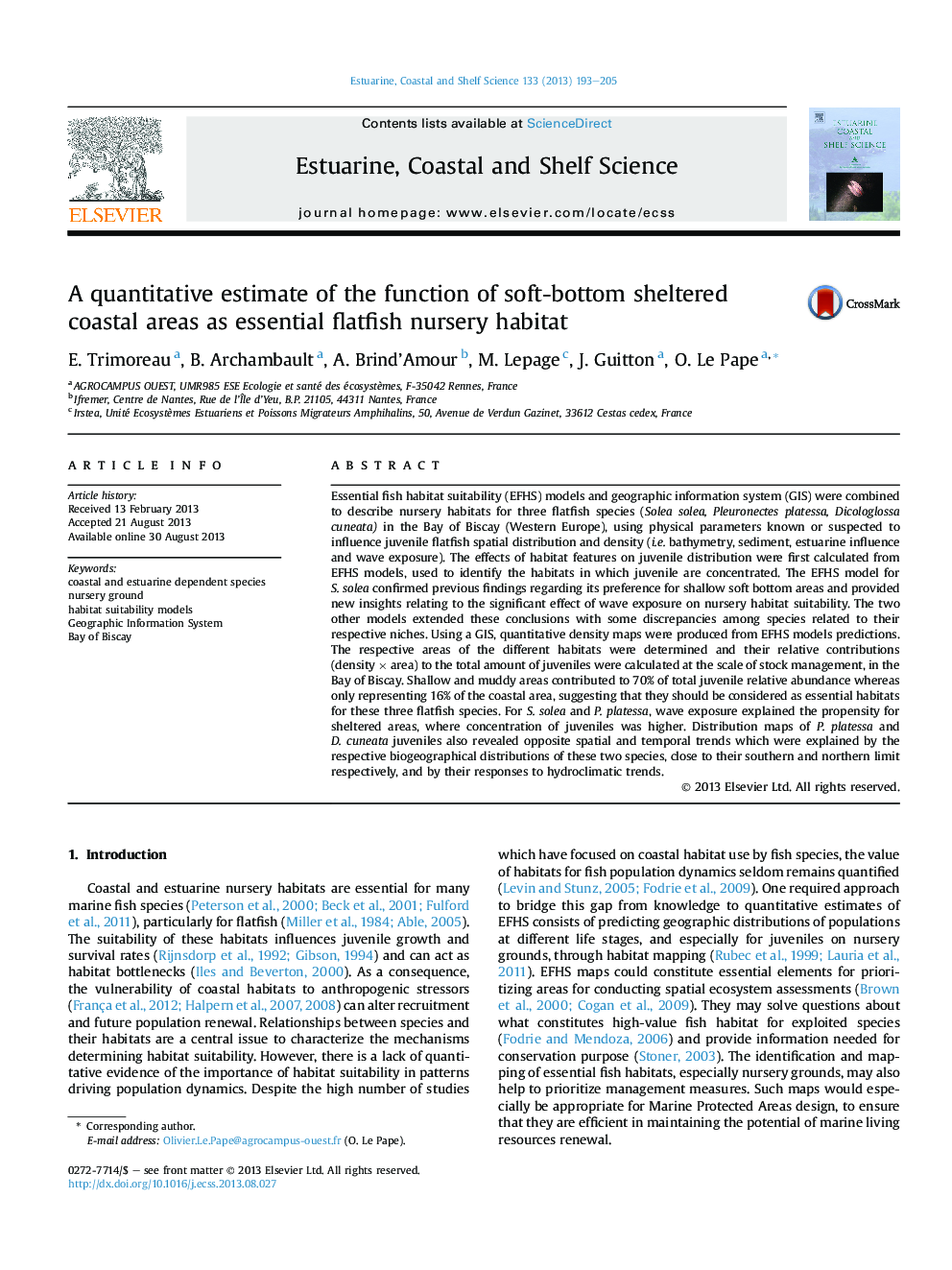| کد مقاله | کد نشریه | سال انتشار | مقاله انگلیسی | نسخه تمام متن |
|---|---|---|---|---|
| 6385041 | 1626663 | 2013 | 13 صفحه PDF | دانلود رایگان |
عنوان انگلیسی مقاله ISI
A quantitative estimate of the function of soft-bottom sheltered coastal areas as essential flatfish nursery habitat
ترجمه فارسی عنوان
برآورد کمی از عملکرد مناطق ساحلی پناهگاه نرم به عنوان محل زاد و ولد پرورش حیوانات ضروری است
دانلود مقاله + سفارش ترجمه
دانلود مقاله ISI انگلیسی
رایگان برای ایرانیان
کلمات کلیدی
گونه وابسته ساحلی و استوایی، زمین مهد کودک، مدل های مناسب زیستگاه، سیستم اطلاعات جغرافیایی، خلیج بیسکی،
موضوعات مرتبط
مهندسی و علوم پایه
علوم زمین و سیارات
زمین شناسی
چکیده انگلیسی
Essential fish habitat suitability (EFHS) models and geographic information system (GIS) were combined to describe nursery habitats for three flatfish species (Solea solea, Pleuronectes platessa, Dicologlossa cuneata) in the Bay of Biscay (Western Europe), using physical parameters known or suspected to influence juvenile flatfish spatial distribution and density (i.e. bathymetry, sediment, estuarine influence and wave exposure). The effects of habitat features on juvenile distribution were first calculated from EFHS models, used to identify the habitats in which juvenile are concentrated. The EFHS model for S. solea confirmed previous findings regarding its preference for shallow soft bottom areas and provided new insights relating to the significant effect of wave exposure on nursery habitat suitability. The two other models extended these conclusions with some discrepancies among species related to their respective niches. Using a GIS, quantitative density maps were produced from EFHS models predictions. The respective areas of the different habitats were determined and their relative contributions (density Ã area) to the total amount of juveniles were calculated at the scale of stock management, in the Bay of Biscay. Shallow and muddy areas contributed to 70% of total juvenile relative abundance whereas only representing 16% of the coastal area, suggesting that they should be considered as essential habitats for these three flatfish species. For S. solea and P. platessa, wave exposure explained the propensity for sheltered areas, where concentration of juveniles was higher. Distribution maps of P. platessa and D. cuneata juveniles also revealed opposite spatial and temporal trends which were explained by the respective biogeographical distributions of these two species, close to their southern and northern limit respectively, and by their responses to hydroclimatic trends.
ناشر
Database: Elsevier - ScienceDirect (ساینس دایرکت)
Journal: Estuarine, Coastal and Shelf Science - Volume 133, 20 November 2013, Pages 193-205
Journal: Estuarine, Coastal and Shelf Science - Volume 133, 20 November 2013, Pages 193-205
نویسندگان
E. Trimoreau, B. Archambault, A. Brind'Amour, M. Lepage, J. Guitton, O. Le Pape,
